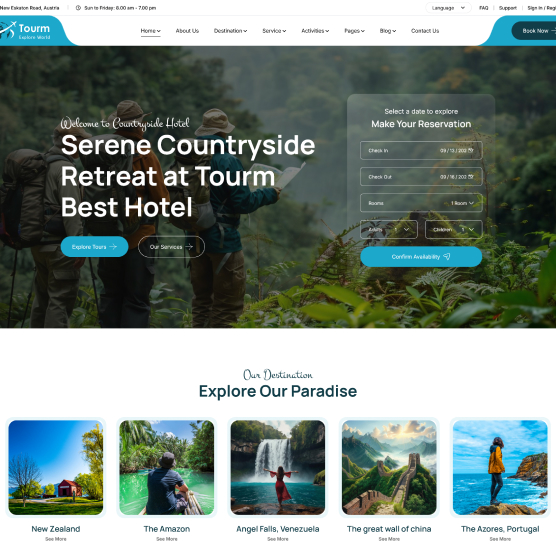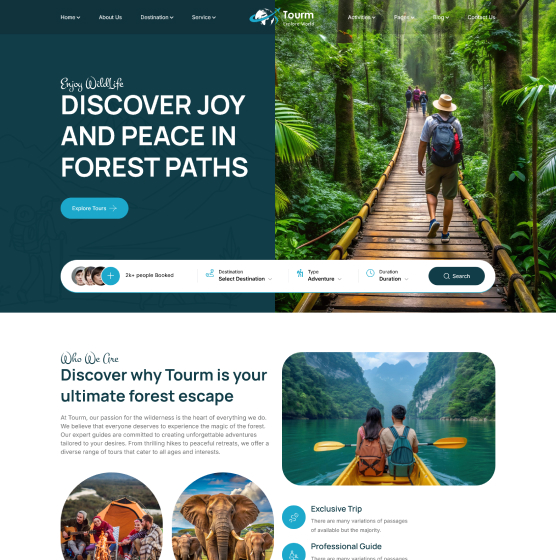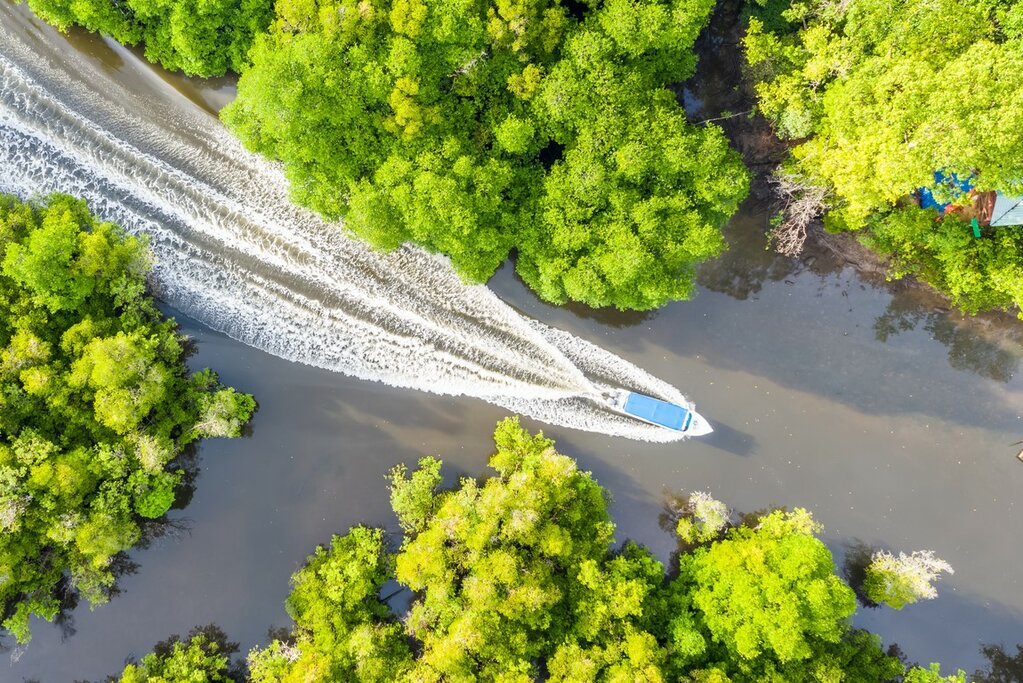Malaysia’s Kinabatangan River is a wildlife haven. It’s a must-visit for nature lovers.
The Kinabatangan River, nestled in Sabah, Malaysia, is a sanctuary for diverse wildlife. Stretching over 560 kilometers, this river is one of the longest in the country. Its lush surroundings are home to many exotic animals and plants. From majestic elephants to rare birds, the river teems with life.
Visitors can enjoy boat cruises, spotting creatures in their natural habitat. This unique ecosystem offers an unforgettable experience for all who venture there. Discover the wonders of Kinabatangan River and immerse yourself in the beauty of Malaysia’s wildlife.
Kinabatangan River Overview
The Kinabatangan River is the longest river in Sabah, Malaysia. It flows for about 560 kilometers. The river runs through the Kinabatangan Rainforest. This area is rich in biodiversity. Many unique animals live here. It is one of the best places for wildlife spotting in Malaysia. The river flows into the Sulu Sea. The area has many small villages along its banks.
The Kinabatangan River has a rich history. Indigenous people have lived here for centuries. They rely on the river for food and transport. In the past, traders used the river as a route. It connected different parts of Borneo. The river is also important for its ancient caves. These caves have prehistoric art and artifacts. The area has been studied by many historians. The Kinabatangan River is crucial for both history and culture.

Credit: www.therarewelshbit.com
Flora Of Kinabatangan
Kinabatangan River is home to many unique plants. These plants only grow in this area. Endemic species include the Kinabatangan orchid. This orchid is very beautiful. Another plant is the Kinabatangan pitcher plant. It traps insects inside its cup.
The rainforest around Kinabatangan River is full of dense trees. Many trees are very tall. They form a canopy. The canopy blocks much sunlight. Ferns and mosses grow on the forest floor. Flowering plants add bright colors to the green forest. The rainforest is always wet. This helps the plants grow.
Fauna Of Kinabatangan
The Kinabatangan River is home to many mammals. You can see orangutans swinging from trees. Proboscis monkeys are often seen near the river banks. Pygmy elephants roam the forests. Malayan sun bears may be spotted deep in the jungle. There are also clouded leopards and Bornean gibbons.
Many birds live along the Kinabatangan River. Hornbills are very common. Kingfishers can be seen near the water. Eagles soar high above the trees. Herons and egrets fish in the river. Pittas and woodpeckers live in the dense forest. Storks and swifts can also be spotted.

Credit: www.downbelowadventures.com
Unique Wildlife Encounters
Pygmy elephants are the smallest elephants in the world. They live in the forests near the Kinabatangan River. These gentle giants are often seen in groups. They move slowly and eat lots of plants. Watching them is a special treat. Many visitors are amazed by their size and beauty.
Proboscis monkeys have funny noses. Their noses are big and long. These monkeys live in trees by the river. They are excellent swimmers. They jump from tree to tree with ease. Their unique look makes them easy to spot. People enjoy watching their playful behavior. Seeing them is a highlight for many.
Bird Watching Highlights
The Kinabatangan River is home to many rare bird species. You can spot the Bornean Bristlehead, which is a unique bird. The Storm’s Stork is another rare sight. These birds are special to this region. Bird lovers will be thrilled to see them.
There are many spots for bird watching along the river. The lower Kinabatangan area is great for spotting birds. Another good spot is the Sukau village. This area has many birds. Early morning is the best time to visit these spots. You can see many birds during this time.
Conservation Efforts
Local groups work hard to protect the Kinabatangan River. They teach people about the importance of wildlife. They also plant trees. This helps the forest grow. Many animals find homes in these trees.
Villagers also help. They report any illegal activities. This keeps the area safe for animals. Small steps make a big difference.
Many global organizations support local groups. They provide funds for projects. They also share knowledge and tools. These partnerships strengthen conservation efforts.
Scientists from around the world study the river. They learn about the animals and plants. This information helps in making better plans for protection.
Travel Tips
The best time to visit Kinabatangan River is during the dry season. This season runs from March to October. During this time, the weather is warm and sunny. Wildlife is more active and easier to spot. You may see elephants, monkeys, and many birds. Avoid the wet season from November to February. Heavy rains can cause floods and make travel difficult.
Comfortable clothing is a must. Wear light and breathable fabrics. Bring a hat and sunglasses to protect from the sun. Don’t forget insect repellent to keep bugs away. Waterproof bags are useful for your gadgets and valuables. A good pair of binoculars is helpful for wildlife watching. Lastly, pack a reusable water bottle to stay hydrated.

Credit: www.wildlifeworldwide.com
Sustainable Tourism
Visitors are encouraged to follow eco-friendly practices while exploring the Kinabatangan River. Avoid using plastic bottles. Carry reusable water bottles. Dispose of trash properly. Stay on marked trails. This helps protect wildlife habitats. Choose eco-friendly tours. They use sustainable methods. They respect the environment. These small actions help a lot.
Local communities play a big role. They help in conservation efforts. They guide tourists responsibly. This provides them with income. It helps improve their lives. Tourists can support local businesses. Buy local crafts and food. This benefits the community. It fosters a positive relationship. Tourists and locals work together. This creates a better environment for all.
Frequently Asked Questions
Are There Crocodiles In The Kinabatangan River?
Yes, there are crocodiles in the Kinabatangan River. They are commonly seen in the river’s waters. Always exercise caution.
Where To See Wildlife In Borneo?
Visit Kinabalu Park and Danum Valley for diverse wildlife. Explore Sepilok Orangutan Rehabilitation Centre and Bako National Park for unique species.
How Many Days In Kinabatangan River?
A 2 to 3-day trip is ideal for exploring Kinabatangan River. This allows you to experience wildlife and river cruises fully.
What Is The History Of Kinabatangan River?
The Kinabatangan River in Malaysia has a rich history. It has been a vital waterway for trade and transportation for centuries. Indigenous communities have lived along its banks, relying on it for sustenance. Today, it is renowned for its biodiversity and eco-tourism opportunities.
Conclusion
Exploring the Kinabatangan River offers an unforgettable wildlife experience. From rare birds to unique primates, this river is a sanctuary for nature lovers. The lush landscapes and diverse ecosystems will captivate your senses. Visiting Kinabatangan River promises adventure and tranquility.
Witnessing the rich biodiversity firsthand is truly magical. Make sure to pack your camera and binoculars. Every moment here is a chance to connect with nature. Enjoy the sights and sounds of Malaysia’s wildlife. The Kinabatangan River awaits your discovery.
Plan your trip and embrace the beauty of nature.











